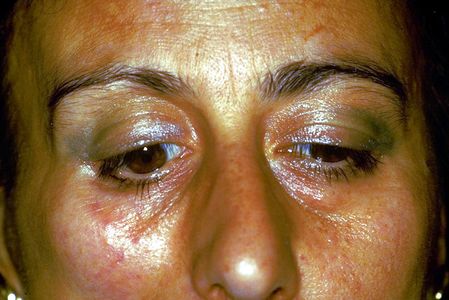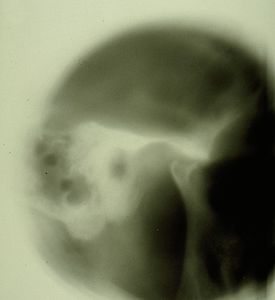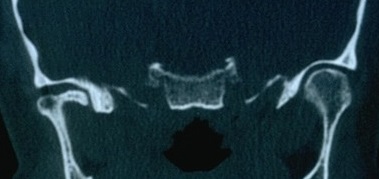Difference between revisions of "Logic of medical language 1"
| Line 183: | Line 183: | ||
{{Bib}} | {{Bib}} | ||
| + | |||
| + | {{apm}} | ||
| + | |||
| + | <onlyinclude> </onlyinclude> | ||
Latest revision as of 18:01, 7 March 2022
Medical language is an extended natural language
Language is a source of misunderstandings and errors and in medicine: actually, often the language we use leaves us in trouble because it is semantically underdeveloped and does not agree with standard scientific ideas. To better explain this concept, which apparently seems off-topic, we must describe some essential characteristics of the logic of language that will make us better understand why a term like orofacial pain can take on a different meaning following a classical logic or a formal one.
The passage from classical logic to formal logic does not imply adding a minor detail as it requires an accurate description. Although medical and dental technology has developed breathtaking models and devices in many dentistry rehabilitation disciplines, such as electromyographs, cone-beam CT, oral digital scan, etc., the medical language still needs improvement.
First of all, we must distinguish between natural languages (English, German, Italian, etc.) and formal languages, such as mathematics. The natural ones emerge naturally in social communities as much as in scientific communities. Simultaneously, the formal languages are artificially built for use in disciplines such as mathematics, logic and computer programming. Formal languages are characterized by syntax and semantics with precise rules, while a natural language has a fairly vague syntax known as grammar and lacks any explicit semantics.
To keep this study active and engaging, and to avoid it degenerating into a boring treatise on the philosophy of science, let’s consider a very explanatory clinical case. We will deal with it using different languages:
Clinical case and logic of medical language
Patient Mary Poppins (obviously a fictitious name) was followed and treated for over 10 years by multiple colleagues, including dentists, family doctors, neurologists and dermatologists. Her brief story is as follows:
- the woman first noticed small patches of abnormal pigmentation on the right side of her face at the age of 40 (she was now 50).
On her admission to a dermatological division, a skin biopsy was performed, and it was consistent with the diagnosis of localized scleroderma of the face (morphea);
corticosteroids were prescribed. - At the age of 44, she began to have involuntary contractions of the right masseter and temporal muscles; the contractions increased in duration and frequency over the years. The spasmodic contractions were referred to by the patient as both day and night lock.
At her first neurological evaluation, dyschromia was less evident. Still, her face was asymmetrical due to a slight indentation of the right cheek and marked hypertrophy of the masseter and right temporal muscles.
The diagnoses were varied, due to the limitation of the medical language as we will see below.
The clinical scenario can be reduced to the following: the patient expresses in her natural language the psychophysical state that has long afflicted her; the dentist, after having performed a series of tests such as anamnesis, a stratigraphy and a CT scan of the TMJ (Figures 1, 2 and 3), concludes with a diagnosis of 'Temporomandibular Disorders', which we call 'TMDs'[1][2][3]; the neurologist remains instead on a diagnosis of organic neuromotor pathology of the 'neuropathic Orofacial Pain' (nOP) type, excluding the TMDs component, or does not consider the main cause. To not sympathize with either the dentist or the neurologist in this context, we will consider the patient suffering from ‘TMDs/nOP’; so nobody fights.
We are obviously in front of a series of topics that deserve adequate discussion because they concern clinical diagnostics.
Unlike the formal languages of mathematics, logic and computer programming (which are artificial systems of signs with precise rules of syntax and semantics), most scientific languages develop as a simple expansion of natural language with a mix of some technical terms. The medical language belongs to this intermediate category. It emerges from natural and everyday language by adding terms such as 'neuropathic pain', 'Temporomandibular Disorders', 'demyelination', 'allodynia', etc. This is why it has no specific and semantic syntax beyond the one it takes from natural language. For example, let's consider the term 'disease' referring to the patient Mary Poppins: this is a term that indicates the fundamental concept of medicine, disease at the base of nosology and clinical research and practice. It is expected to be a well-defined technical term, yet it is still an indefinite term.
Nobody knows what it means precisely and, apart from some philosophers of medicine, nobody is interested in its exact meaning. For example, does 'disease' concern the subject/patient or the System (as a living organism)? And consequently: can a patient who is not sick in time live together with a system already in a state of structural damage in time ?
The term languishes without any semantics as if it were irrelevant or gratuitous and its derivatives share the same semantic obscurity with it.[4]
- In short,
- is the patient Mary Poppins sick, or is the chewing System damaged?
- Is it instead a 'System' disease considering the masticatory System in its entirety consisting of subsets such as receptors, peripheral and central nervous tissue, maxillary bones, teeth, tongue, skin, etc.,?
- Or, is it an 'organ' disease involving in this specific case the temporomandibular joint (TMJ)?
These brief notes demonstrate how the inaccuracies and peculiarities of natural language enter medicine through its syntactic and semantically underdeveloped form. We should deal with some of these peculiarities with concrete clinical examples.
Medical language is an extended natural language
Language is a source of misunderstandings and errors and in medicine: actually, often the language we use leaves us in trouble because it is semantically underdeveloped and does not agree with standard scientific ideas. To better explain this concept, which apparently seems off-topic, we must describe some essential characteristics of the logic of language that will make us better understand why a term like orofacial pain can take on a different meaning following a classical logic or a formal one.
The passage from classical logic to formal logic does not imply adding a minor detail as it requires an accurate description. Although medical and dental technology has developed breathtaking models and devices in many dentistry rehabilitation disciplines, such as electromyographs, cone-beam CT, oral digital scan, etc., the medical language still needs improvement.
First of all, we must distinguish between natural languages (English, German, Italian, etc.) and formal languages, such as mathematics. The natural ones emerge naturally in social communities as much as in scientific communities. Simultaneously, the formal languages are artificially built for use in disciplines such as mathematics, logic and computer programming. Formal languages are characterized by syntax and semantics with precise rules, while a natural language has a fairly vague syntax known as grammar and lacks any explicit semantics.
To keep this study active and engaging, and to avoid it degenerating into a boring treatise on the philosophy of science, let’s consider a very explanatory clinical case. We will deal with it using different languages:
Clinical case and logic of medical language
Patient Mary Poppins (obviously a fictitious name) was followed and treated for over 10 years by multiple colleagues, including dentists, family doctors, neurologists and dermatologists. Her brief story is as follows:
- the woman first noticed small patches of abnormal pigmentation on the right side of her face at the age of 40 (she was now 50).
On her admission to a dermatological division, a skin biopsy was performed, and it was consistent with the diagnosis of localized scleroderma of the face (morphea);
corticosteroids were prescribed. - At the age of 44, she began to have involuntary contractions of the right masseter and temporal muscles; the contractions increased in duration and frequency over the years. The spasmodic contractions were referred to by the patient as both day and night lock.
At her first neurological evaluation, dyschromia was less evident. Still, her face was asymmetrical due to a slight indentation of the right cheek and marked hypertrophy of the masseter and right temporal muscles.
The diagnoses were varied, due to the limitation of the medical language as we will see below.
The clinical scenario can be reduced to the following: the patient expresses in her natural language the psychophysical state that has long afflicted her; the dentist, after having performed a series of tests such as anamnesis, a stratigraphy and a CT scan of the TMJ (Figures 1, 2 and 3), concludes with a diagnosis of 'Temporomandibular Disorders', which we call 'TMDs'[5][6][7]; the neurologist remains instead on a diagnosis of organic neuromotor pathology of the 'neuropathic Orofacial Pain' (nOP) type, excluding the TMDs component, or does not consider the main cause. To not sympathize with either the dentist or the neurologist in this context, we will consider the patient suffering from ‘TMDs/nOP’; so nobody fights.
We are obviously in front of a series of topics that deserve adequate discussion because they concern clinical diagnostics.
Unlike the formal languages of mathematics, logic and computer programming (which are artificial systems of signs with precise rules of syntax and semantics), most scientific languages develop as a simple expansion of natural language with a mix of some technical terms. The medical language belongs to this intermediate category. It emerges from natural and everyday language by adding terms such as 'neuropathic pain', 'Temporomandibular Disorders', 'demyelination', 'allodynia', etc. This is why it has no specific and semantic syntax beyond the one it takes from natural language. For example, let's consider the term 'disease' referring to the patient Mary Poppins: this is a term that indicates the fundamental concept of medicine, disease at the base of nosology and clinical research and practice. It is expected to be a well-defined technical term, yet it is still an indefinite term.
Nobody knows what it means precisely and, apart from some philosophers of medicine, nobody is interested in its exact meaning. For example, does 'disease' concern the subject/patient or the System (as a living organism)? And consequently: can a patient who is not sick in time live together with a system already in a state of structural damage in time ?
The term languishes without any semantics as if it were irrelevant or gratuitous and its derivatives share the same semantic obscurity with it.[8]
- In short,
- is the patient Mary Poppins sick, or is the chewing System damaged?
- Is it instead a 'System' disease considering the masticatory System in its entirety consisting of subsets such as receptors, peripheral and central nervous tissue, maxillary bones, teeth, tongue, skin, etc.,?
- Or, is it an 'organ' disease involving in this specific case the temporomandibular joint (TMJ)?
These brief notes demonstrate how the inaccuracies and peculiarities of natural language enter medicine through its syntactic and semantically underdeveloped form. We should deal with some of these peculiarities with concrete clinical examples.
Clinical approach
(hover over the images)
- ↑ Tanaka E, Detamore MS, Mercuri LG, «Degenerative disorders of the temporomandibular joint: etiology, diagnosis, and treatment», in J Dent Res, 2008.
PMID:18362309
DOI:10.1177/154405910808700406 - ↑ Roberts WE, Stocum DL, «Part II: Temporomandibular Joint (TMJ)-Regeneration, Degeneration, and Adaptation», in Curr Osteoporos Rep, 2018.
PMID:29943316
DOI:10.1007/s11914-018-0462-8 - ↑ Lingzhi L, Huimin S, Han X, Lizhen W, «MRI assessment and histopathologic evaluation of subchondral bone remodeling in temporomandibular joint osteoarthritis: a retrospective study», in Oral Surg Oral Med Oral Pathol Oral Radiol, 2018.
PMID:30122441
DOI:10.1016/j.oooo.2018.05.047 - ↑ Sadegh-Zadeh Kazem, «Handbook of Analytic Philosophy of Medicine», Springer, 2012, Dordrecht.
ISBN: 978-94-007-2259-0
DOI:10.1007/978-94-007-2260-6 - ↑ Tanaka E, Detamore MS, Mercuri LG, «Degenerative disorders of the temporomandibular joint: etiology, diagnosis, and treatment», in J Dent Res, 2008.
PMID:18362309
DOI:10.1177/154405910808700406 - ↑ Roberts WE, Stocum DL, «Part II: Temporomandibular Joint (TMJ)-Regeneration, Degeneration, and Adaptation», in Curr Osteoporos Rep, 2018.
PMID:29943316
DOI:10.1007/s11914-018-0462-8 - ↑ Lingzhi L, Huimin S, Han X, Lizhen W, «MRI assessment and histopathologic evaluation of subchondral bone remodeling in temporomandibular joint osteoarthritis: a retrospective study», in Oral Surg Oral Med Oral Pathol Oral Radiol, 2018.
PMID:30122441
DOI:10.1016/j.oooo.2018.05.047 - ↑ Sadegh-Zadeh Kazem, «Handbook of Analytic Philosophy of Medicine», Springer, 2012, Dordrecht.
ISBN: 978-94-007-2259-0
DOI:10.1007/978-94-007-2260-6
particularly focusing on the field of the neurophysiology of the masticatory system





